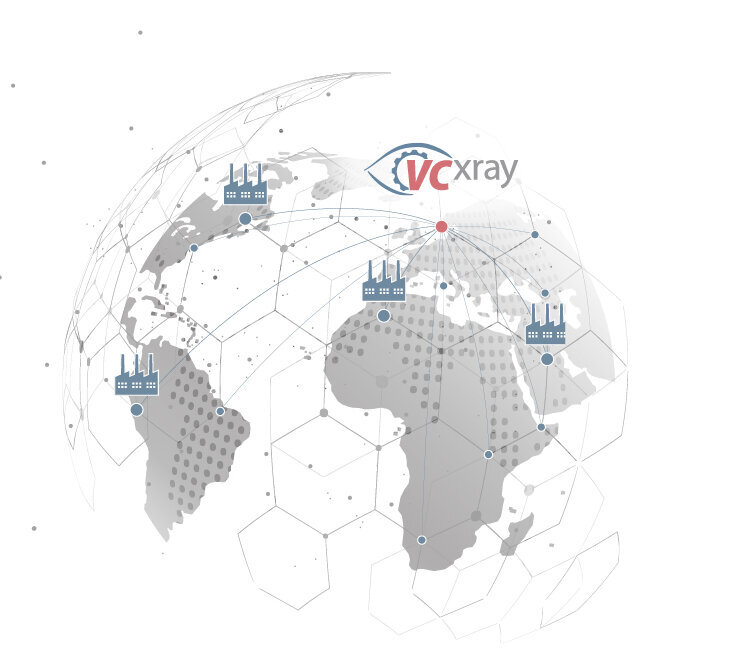
X-ray inspection systems for the energy and power sector
The energy industry saw a growing emphasis on renewable energy, including solar, wind, hydropower, biomass, and geothermal, to reduce CO2 emissions and provide a sustainable energy supply. Electrification in various sectors such as transport, industry, and heating was a focus to reduce dependence on fossil fuels. Likewise, energy storage, energy efficiency, and decentralized energy supply gained importance.
Digital technologies and smart grids were introduced to optimize energy flow and better integrate renewable energy sources. Green financing and investment in renewables increased, while electromobility had a strong impact on the energy industry. Decarbonization became a major goal for many countries, resulting in the gradual phase-out of coal and petroleum industries. Hydrogen economy was considered as promising approaches to decarbonizing various sectors and making energy supply more sustainable.
Materials testing plays a crucial role in the energy industry. It ensures the safety, reliability, and efficiency of materials and components in energy-generating, transmitting, and storing systems. Testing helps select appropriate materials for specific applications and promotes the efficiency, durability, and maintenance of energy systems. It also contributes to innovation, research of new materials, and protection of the environment. Materials testing is therefore fundamental to the success and progress of the energy industry.
The use of X-ray technology and computed tomography (CT) for materials testing of components in the energy industry offers a variety of benefits and applications. Here are some important aspects:
Typical use cases include the inspection of turbine blades and rotor components to check for cracks, material fatigue and other defects that could affect turbine performance and safety. In addition, X-ray and CT systems are used in the research and development of fuel cells and battery technologies to examine the material structure and composition in the cells to optimize performance. In nuclear energy, X-ray and CT systems are used to inspect the structure and integrity of fuel assemblies, reactor pressure vessels, and other components to identify potential defects or deviations. X-ray and CT systems are also used in the wind energy industry to check the quality and integrity of rotor blades, gearboxes and other components.
Overall, X-ray and CT play an important role in materials testing of components in the energy industry by providing non-destructive and accurate inspection, detecting defects early and thus contributing to the safety, reliability and efficiency of energy-related components.
Meeting these challenges requires close collaboration between engineers, materials scientists and testing laboratories to develop innovative testing methods and continuously improve the safety and efficiency of components in the energy industry.
The quality control requirements of manufacturers and materials laboratories vary widely and can be roughly divided into three categories:
Suppliers processing lower volumes require manual systems for small batch or single test inspection. Here, the ECO H-Series is the perfect system family for smaller components. Medium volume inspection needs require more automation of 2D inspection, CNC systems, and batch loading. Automated data processing becomes more important. In the case of extremely high volumes, for example in series testing, high-performance inline systems with automatic evaluation are required. In this way, the shortest cycle times can be achieved. Another application is high-precision computed tomography for metrological or forensic applications. These measuring machines must be housed in an air-conditioned measuring room. Choosing the right system can be complex, and a good decision must weigh many parameters such as size, speed, cost, etc. Contact our product specialists for further advice.
Contact us today
Improve the quality and safety of your components with our state-of-the-art X-ray systems and CT systems. Contact us today to learn more about our material inspection solutions. Our team is always available to answer your questions and develop a customized solution for your needs.

With our Service centers and Hubs worldwide,
we will complete your staff with maximum
efficiency in your specified time frame and
without interrupting your operations.
No matter where you are, we are never far away.
Our knowledge and experience
maximize your company‘s profits.